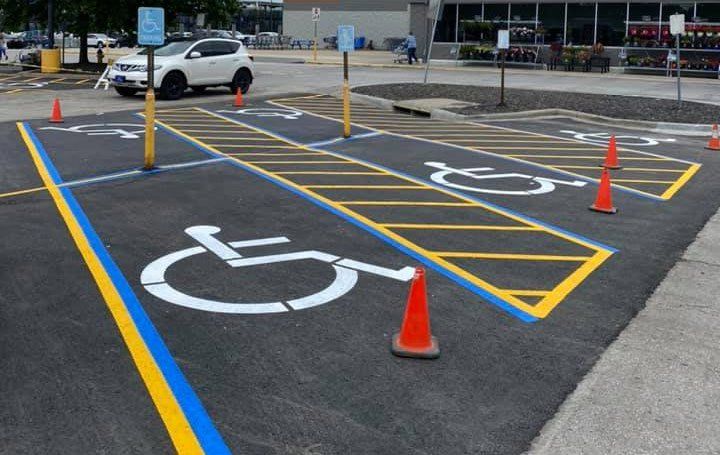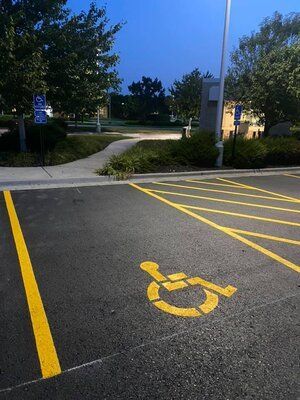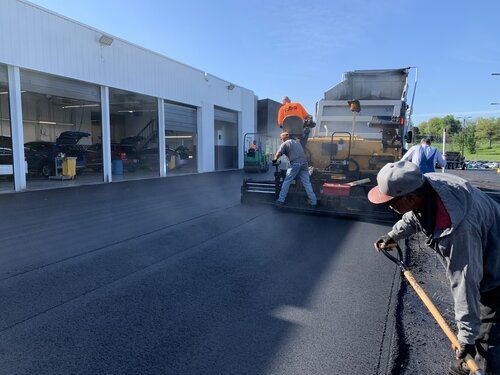Introduction
In the bustling world of commercial and residential properties, a well-marked parking lot is not just an aesthetic enhancement; it's a necessity. Over time, however, wear and tear can lead to faded lines, making it difficult for drivers to navigate effectively. This is where the process of restriping comes into play. Whether you're managing a retail space, a corporate building, or any public area with parking, understanding when and how to restripe a faded parking lot effectively can save you time, money, and headaches down the line.
This comprehensive guide will explore every facet of parking lot restriping. From the materials used to the costs involved—whether you're looking at asphalt paving, sealcoating, or hiring professional parking lot striping services—we’ll cover all your bases.
What is Parking Lot Restriping?
Parking lot restriping refers to repainting faded lines on a parking surface to restore visibility and organization. This process involves using specialized paints that are designed for durability and visibility under various weather conditions.
Why is Parking Lot Restriping Important?
- Safety: Clear markings help prevent accidents by guiding drivers. Compliance: Adhering to ADA regulations ensures accessibility for all. Aesthetics: A fresh coat of paint improves the overall appearance of your property. Space Optimization: Properly marked spaces can maximize parking efficiency.
When Should You Restrip Your Parking Lot?
Understanding when to restripe your parking lot involves several factors:
1. Visual Indicators of Fading Lines
If you notice that your lines are barely visible or have completely worn away, it's time for action.

2. Seasonal Changes
Consider the impact of winter weather or heavy rain on your parking lot's visibility. After harsh seasons, it may be a good idea to schedule restriping.
3. Regular Maintenance Schedule
Establishing a routine maintenance timeline (e.g., yearly or bi-yearly) helps keep your lot in optimal condition.
How Often Should You Restripe?
The general recommendation is every one to two years depending on traffic volume and weather conditions. High-traffic areas may require more frequent attention.
When and How to Restrip a Faded Parking Lot Effectively: Step-by-Step Guide
Step 1: Assess the Need for Restriping
Before doing anything, evaluate the current state of your parking lot's markings:
- Are they barely visible? Are there cracks in the asphalt? Is there significant wear due to weather?
Step 2: Choose the Right Materials
Selecting quality materials is crucial:
Types of Paint
- Thermoplastic Paint: Durable but expensive. Water-Based Paint: Economical but requires more frequent application.
Considerations
- Weather resistance Drying time Application method
Step 3: Prepare Your Surface
Proper preparation ensures that new paint adheres effectively:
Clean the surface thoroughly—use a power washer if necessary. Fill any cracks with asphalt repair solutions. Allow adequate drying time before applying new paint.Step 4: Plan Your Layout
Planning can save you hassle later:
Measure available space accurately. Decide on the number of spots based on local regulations. Mark proposed lines with chalk for visibility before painting.Step 5: Apply Paint Strategically
Following best practices during application will yield better results:
Use stencils for consistent shapes like handicap symbols. Apply multiple coats if necessary for better durability. Allow proper drying time between coats.Cost Considerations in Parking Lot Restriping
Understanding costs associated with restriping is essential for budgeting purposes:
Factors Influencing Cost
Size of Parking Lot Type of Paint Used Labor Costs from Professional ServicesEstimated Costs
| Item | Estimated Cost | |--------------------------|---------------------| | DIY Supplies | $200 - $500 | | Professional Services | $0.25 - $0.75 per sq ft | | Total Average Cost | Varies by location |
Benefits of Hiring Professional Striping Services
While DIY might sound appealing, hiring professionals has its perks:
Expertise in layout design and local compliance regulations Quality assurance with durable materials Time-efficient executionUnderstanding ADA Compliance in Parking Lots
ADA-compliant striping ensures accessibility for individuals with disabilities:
Why is ADA Compliance Crucial?
Failure to comply can lead to legal issues and fines while ensuring access promotes inclusivity.
Key Elements Include
Designated accessible spaces should be wider than standard spots. Appropriate signage must accompany each space. Proper placement relative to building entrances.FAQ Section
Q1: How long does restriping typically last?

Q2: Can I do this myself?
A2: While DIY options exist, professional services often provide greater durability and compliance assurance.
Q3: What is the cost range for professional striping services?
A3: asphalt driveway Typically ranges from $0.25 to $0.75 per square foot based on region and complexity.
Q4: Are there specific paints recommended for asphalt?
A4: Yes! Look for high-durability thermoplastic or water-based paints specifically formulated for asphalt surfaces.
Q5: What should I do if my asphalt surface has cracks?
A5: Before restriping, fill cracks using asphalt patching or sealing methods.
Q6: How often should I sealcoat my asphalt driveway after striping?
A6: Sealcoating is generally recommended every 1-3 years based on traffic conditions and climate exposure.
Conclusion
When considering how to effectively restripe a faded parking lot, understanding both timing and methodology becomes critical in maintaining safety, aesthetics, and compliance with regulations like ADA standards are crucial aspects of effective property management strategies that cannot be overlooked! Utilizing professional services offers peace of mind while ensuring longevity through quality materials tailored precisely for your needs—making it well worth any potential upfront costs incurred during this essential maintenance task!
Whether you’re looking at residential solutions or commercial-grade requirements from experienced asphalt contractors familiar with local laws within your community—rest assured that taking these steps will set you up not just today but also pave pathways towards future success too!
